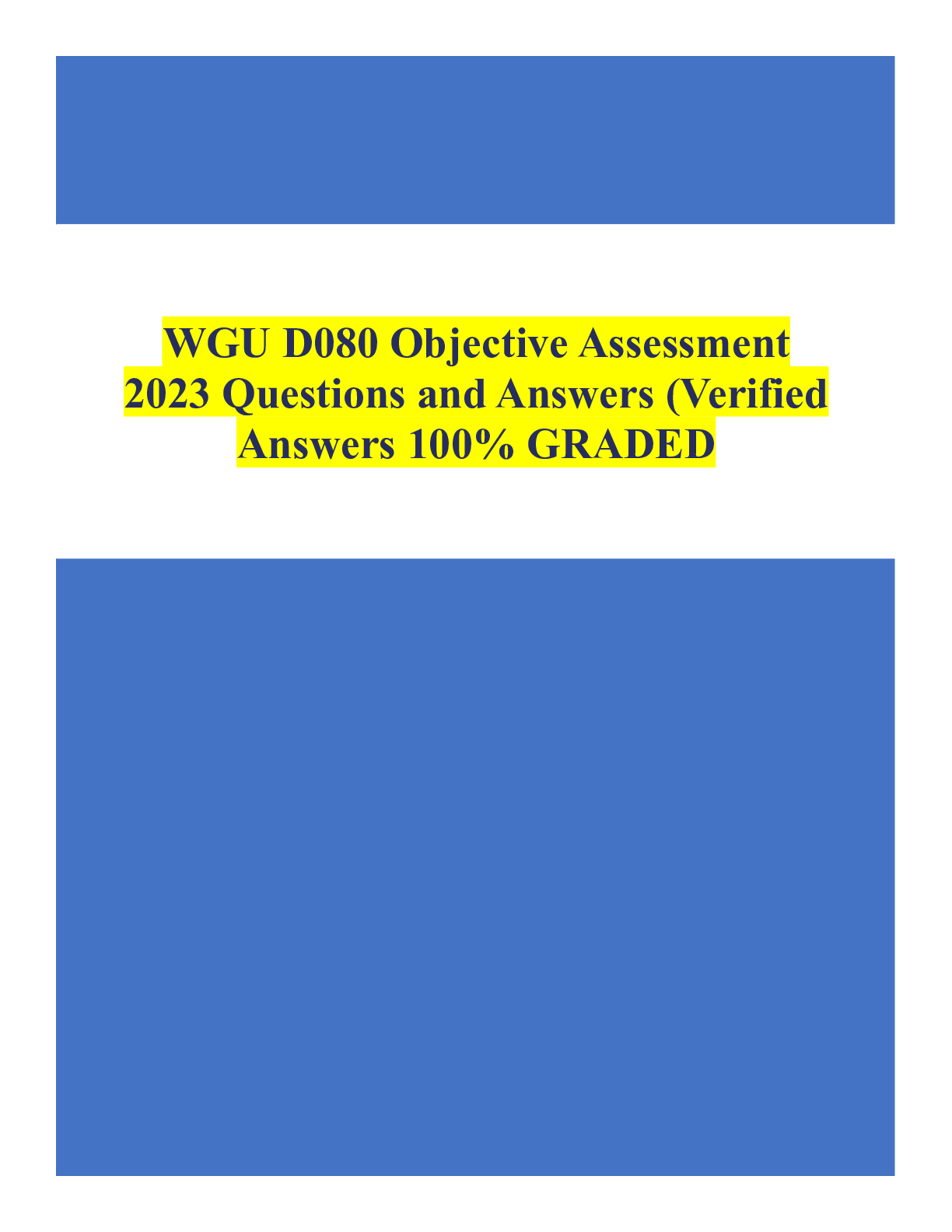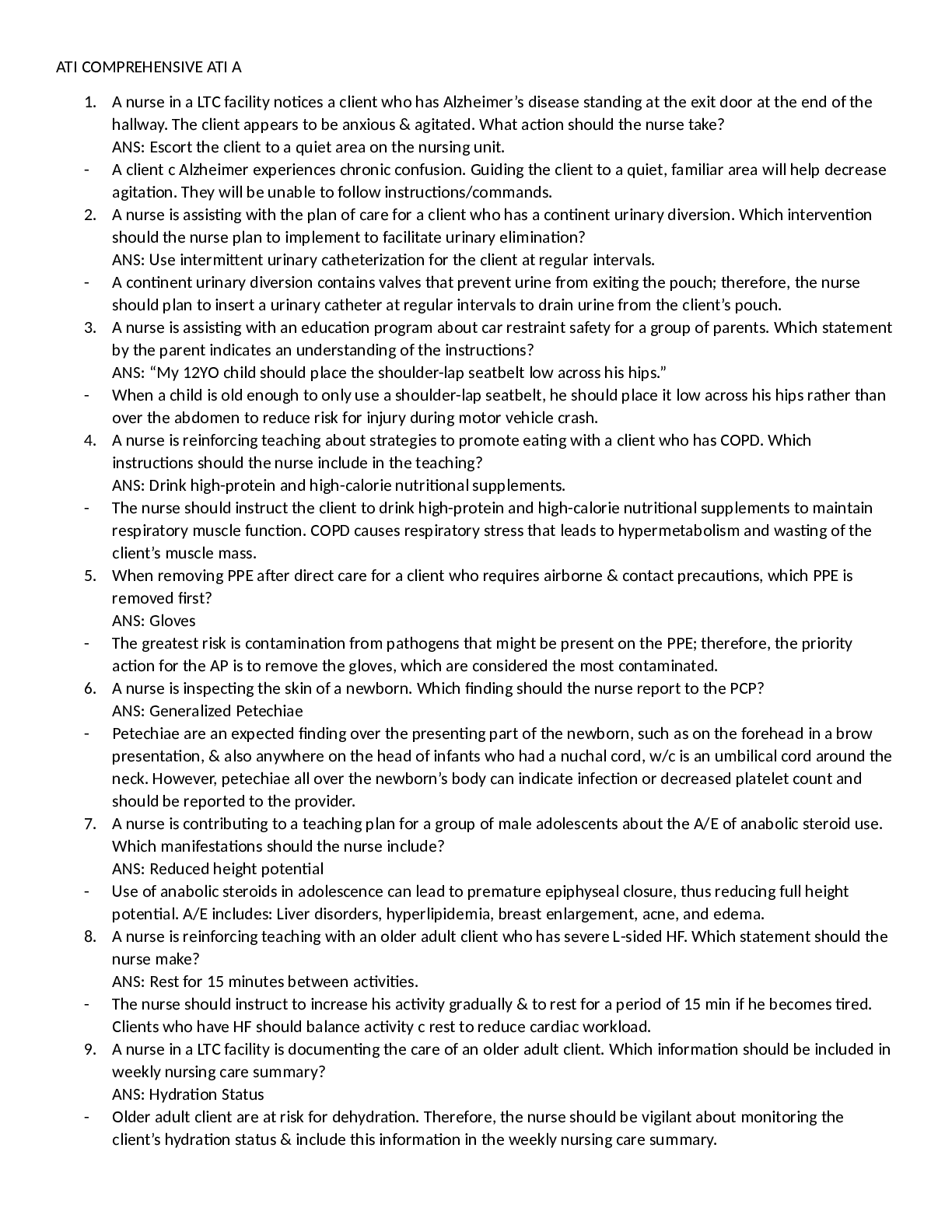
WGU D080 Objective Assessment2023 Questions and Answers (VerifiedAnswers 100% GRADED
*NURSING > QUESTIONS and ANSWERS > NURSING FUNDAMENTA All Documents for ATI Comprehensive Predictor (All)
ATI COMPREHENSIVE ATI A 1. A nurse in a LTC facility notices a client who has Alzheimer’s disease standing at the exit door at the end of the hallway. The client appears to be anxious & agitated. ... What action should the nurse take? ANS: Escort the client to a quiet area on the nursing unit. - A client c Alzheimer experiences chronic confusion. Guiding the client to a quiet, familiar area will help decrease agitation. They will be unable to follow instructions/commands. 2. A nurse is assisting with the plan of care for a client who has a continent urinary diversion. Which intervention should the nurse plan to implement to facilitate urinary elimination? ANS: Use intermittent urinary catheterization for the client at regular intervals. - A continent urinary diversion contains valves that prevent urine from exiting the pouch; therefore, the nurse should plan to insert a urinary catheter at regular intervals to drain urine from the client’s pouch. 3. A nurse is assisting with an education program about car restraint safety for a group of parents. Which statement by the parent indicates an understanding of the instructions? ANS: “My 12YO child should place the shoulder-lap seatbelt low across his hips.” - When a child is old enough to only use a shoulder-lap seatbelt, he should place it low across his hips rather than over the abdomen to reduce risk for injury during motor vehicle crash. 4. A nurse is reinforcing teaching about strategies to promote eating with a client who has COPD. Which instructions should the nurse include in the teaching? ANS: Drink high-protein and high-calorie nutritional supplements. - The nurse should instruct the client to drink high-protein and high-calorie nutritional supplements to maintain respiratory muscle function. COPD causes respiratory stress that leads to hypermetabolism and wasting of the client’s muscle mass. 5. When removing PPE after direct care for a client who requires airborne & contact precautions, which PPE is removed first? [Show More]
Last updated: 3 years ago
Preview 1 out of 26 pages

Buy this document to get the full access instantly
Instant Download Access after purchase
Buy NowInstant download
We Accept:

Can't find what you want? Try our AI powered Search
Connected school, study & course
About the document
Uploaded On
Jul 07, 2021
Number of pages
26
Written in
All
This document has been written for:
Uploaded
Jul 07, 2021
Downloads
0
Views
115
Scholarfriends.com Online Platform by Browsegrades Inc. 651N South Broad St, Middletown DE. United States.
We're available through e-mail, Twitter, Facebook, and live chat.
FAQ
Questions? Leave a message!
Copyright © Scholarfriends · High quality services·